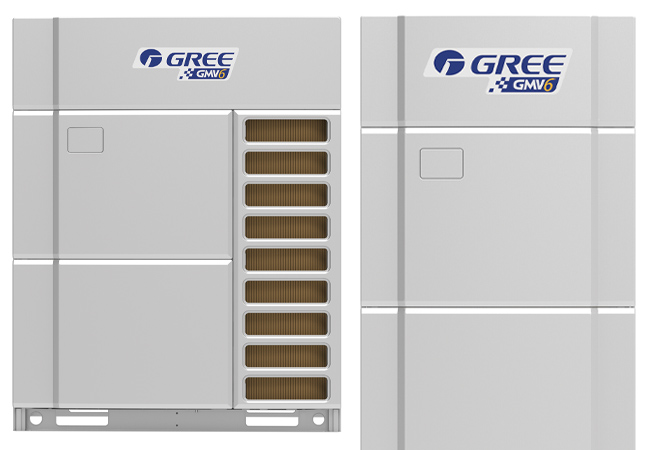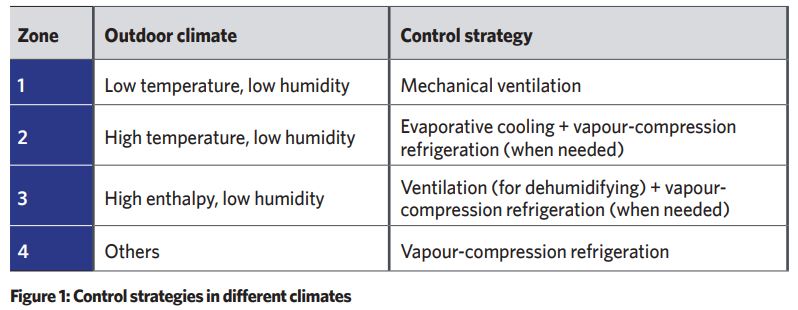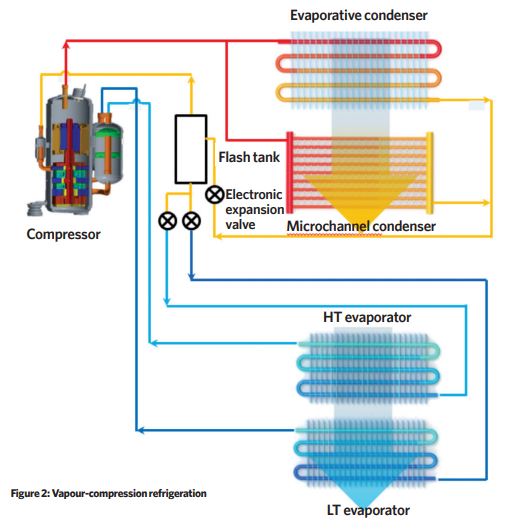
Gree has combined a number of technologies to create an air conditioner capable of achieving net-zero carbon emissions
Gree’s Zero Carbon Source cooling technology, which jointly won the 2021 Global Cooling Prize, innovatively integrates a number of technologies. It achieves a climate impact just 20% of a standard air conditioner when tested employing the Indian seasonal energy efficiency ratio (ISEER) test, with temperatures that reached a high of 36.2°C, an average of 25.6°C, and a wide range of relative humidity levels, with a high of 80.1%.
Advanced vapour-compression refrigeration, photovoltaic (PV) direct-driven technology, plus evaporative cooling, and ventilation – using free cooling sources (air and water) – were combined with environmentally-friendly refrigerants to reduce energy consumption and carbon emissions significantly. Linked to energy storage, the system can easily achieve net-zero carbon in operation.
The assertion that Gree Zero Carbon Source cooling units had ‘five times lower climate impact’ was tested by the organisers of the Global Cooling Award as part of the entry criteria – all participants had to prove climate-impact reduction.
How does Zero Carbon Source work?
Zero Carbon Source air conditioning significantly improves the energy efficiency of vapour-compression refrigeration systems while maximising the efficient use of natural and renewable cooling and power.
Using low-humidity air when available reduces heat and moisture load, while water is used for evaporative cooling and outdoor falling film evaporation, employing a specific type of vertically-orientated heat exchanger.
Cascade heat exchange and vapour-compression refrigeration cycles work in parallel. A new type of compressor, low global warming potential (GWP) refrigerant (R152a), dual-temperature evaporators, and evaporative condensers ensure efficient operation and precise control of cooling and dehumidification.
Depending on the outdoor weather conditions, the system intelligently selects one or more of the three modes of vapour-compression cooling, evaporative cooling and ventilation. Photovoltaic-sourced power is employed whenever possible.
The prototype designed for the Global Cooling Awards was for the residential market, but the system could be scaled up and adapted for commercial applications. Installation is fairly straightforward, in the same way that any household air conditioning system is fitted. The ventilation system needs to be installed on an exterior wall or window, while the photovoltaic panels would typically be installed on the roof.
Parallel compression cycle with dual evaporation temperature
Traditional unit air conditioners employ single-stage compression refrigeration. There is only one suction pressure for the compressor and, during cooling, there is only one evaporation temperature at the corresponding evaporator.
Using the innovative cascade heat exchange and parallel compression refrigeration cycle means there are three suction pressures while the triple-cylinder rotary compressor is working in cooling mode.
The three suction inlets are connected with low- and high-temperature evaporator and flash tank discharge outlets, from low to high pressure, respectively. The indoor air return flow passes through both evaporators in turn, creating cascade heat exchange, while the refrigerant at the condenser outlet entering into the flash tank achieves sub-cooling through the first-stage throttle.
The cascade heat exchange and flash tank sub-cooling both improve the efficiency of the refrigeration cycle and, therefore, the overall energy efficiency of the air conditioning system.
Climate adaptive residential air conditioning
‘Climate adaptive’ means the system can intelligently select one or more of the three modes of vapour-compression refrigeration, evaporative cooling and ventilation, depending on the outdoor weather conditions.

For example, ventilation is selected when the temperature and humidity are low, and evaporative cooling when the temperature is high but the humidity is low (see Figure 1, ‘Control strategies in different climates’).
When it is available and appropriate to do so, the mechanical ventilation system brings in cool, dry air directly. If the outdoor air is warm but relatively dry, and the evaporative cooling mode requirements are met, the water pump will be switched on to create a wet film in front of the ventilator fan, cooling the high-temperature outdoor air before it enters the room.
If the indoor temperature and humidity requirements cannot be met with these ‘free-cooling’ modes, the system will turn on vapour compression in joint operation with evaporative cooling.
A new type of compressor
The triple-cylinder, rolling-rotor compressor has three suction inlets and one discharge outlet. Together, combined with other components of the refrigeration system, a cascade heat-exchange, parallel-compression refrigeration cycle is achieved, improving the efficiency of the refrigeration cycle.
Vapour compression refrigeration explained
The ultra-efficient vapour-compression refrigeration system consists of the triple-cylinder rolling-rotor compressor, as described above, separate falling film evaporative finned-tube condenser and microchannel condenser, first-stage expansion valve, flash tanks, two secondary expansion valves, and two evaporators, which are connected to form a completely enclosed refrigeration system.

The outdoor finned-tube condenser is sprayed with evaporator condensate or tap water to reduce condensation temperature.
Photovoltaics
The air conditioning system uses the PV power preferentially, but can seamlessly switch between PVs and the grid when required.
The prototype entered into the Global Cooling Awards was not completely net zero because of the size limits, but with further adoption of energy storage and PV grid connection, zero carbon emissions is achievable.
- Visit globalcoolingprize.org for more information about the Global Cooling Prize. Gree will publish a paper about this new technology at a later date – www.gree.uk.com
- Tim Boxall is technical sales support manager at Gree UK
